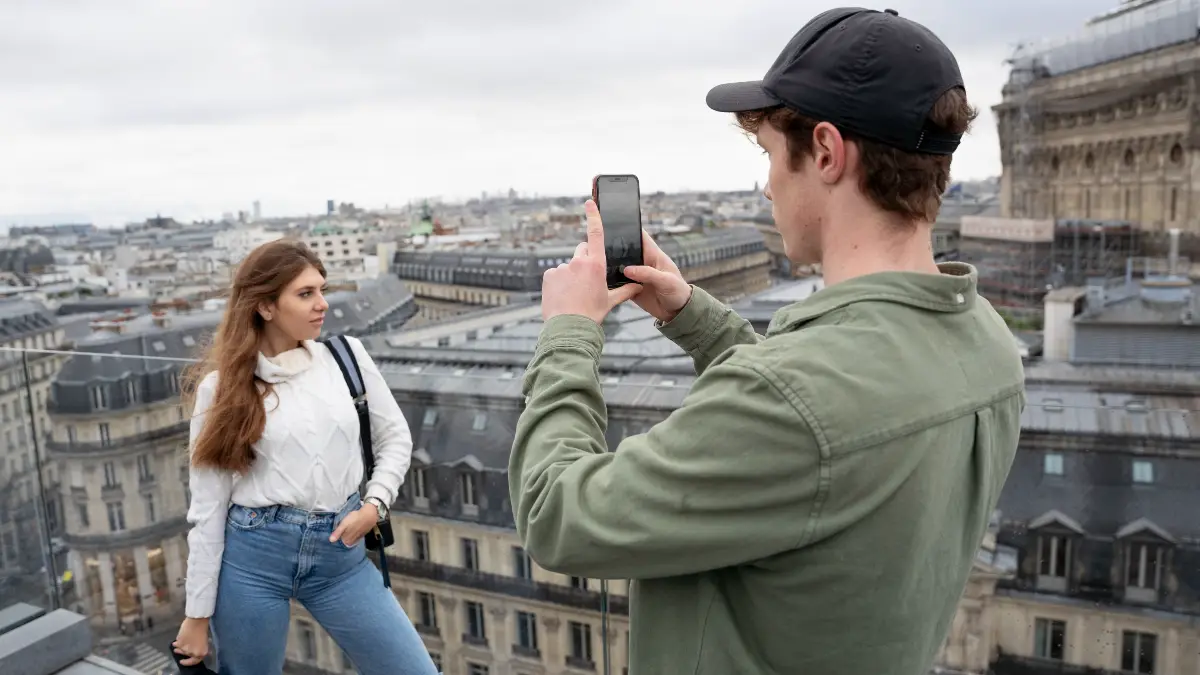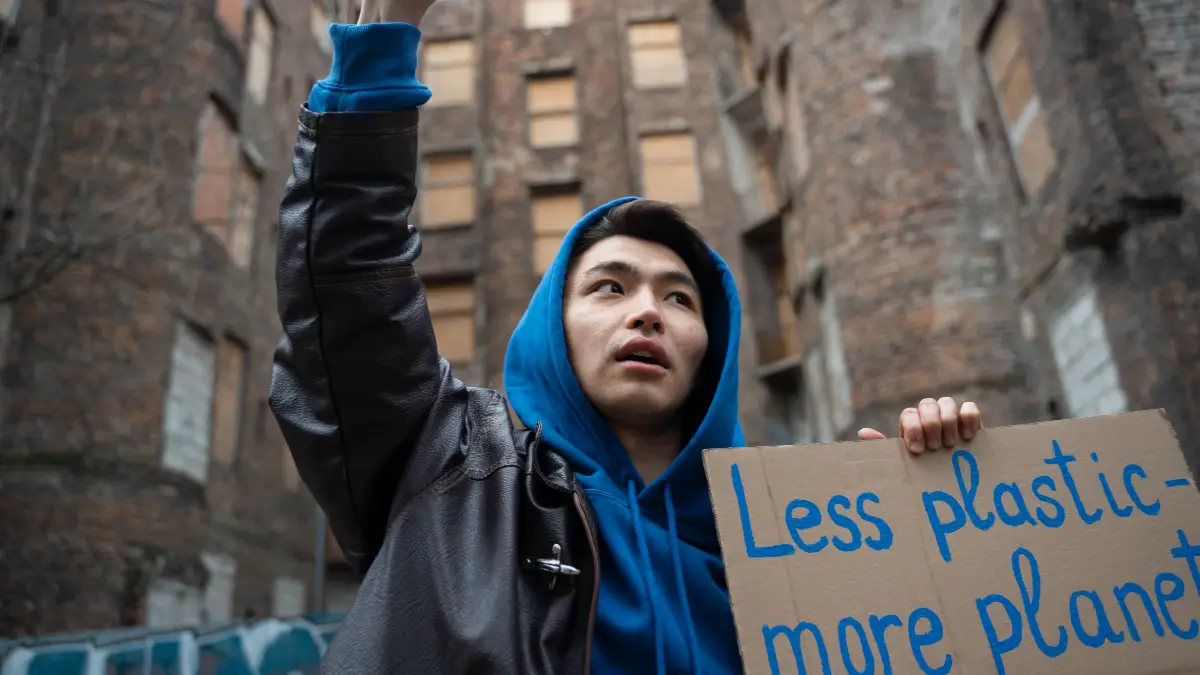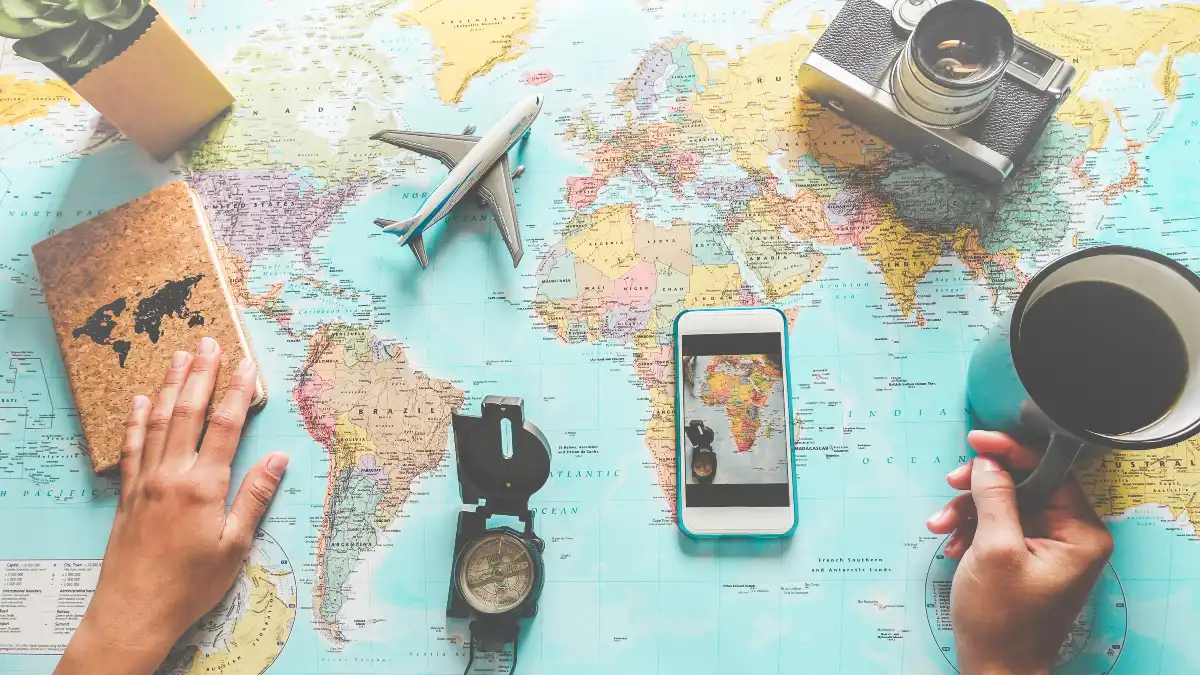Your social media feed is filled with perfect travel photos, but they don’t show the full picture. Behind the sun-drenched cliffs and serene canals, a quiet rebellion is growing. Local communities are being strained, environments are nearing collapse, and the same influencers who built these destinations’ fame are now leading a silent exodus.
You want to see the world, but not at the expense of the places you visit. News reports talk about “overtourism,” but they offer no real answers or actionable advice.
This guide is different. It’s your 2025 playbook for traveling with a conscience, revealing the cities that smart creators are avoiding and the powerful reasons—political, ethical, and environmental—behind their decision. You’ll learn where not to go, and more importantly, discover the better places to explore instead.
Why Travel Influencers Are Secretly Avoiding These Cities

You see the pictures on your phone every day. Sunny cliffs in Italy. Calm canals in Venice. But behind those perfect photos, there’s a real story. Communities are hurting. The environment is in trouble. Even the influencers who made these places famous are quietly leaving.
If you want to travel the right way, you know it’s a problem. You want to see the world, but you don’t want to cause harm.
News stories talk about “overtourism,” but they don’t tell you what to do. This guide will show you where to avoid in 2025, and where you should go instead.
A new travel map is being drawn for 2025. It’s not being made by travel companies. It’s being made by people protesting for political, ethical, and environmental reasons. We’ll look at these three types of boycotts.
You’ll learn which cities influencers are skipping and find out about the great places they’re visiting instead. This will help you make better travel choices.
Why So Many Canadians Are Not Visiting the U.S.

A travel boycott isn’t usually an official announcement. It’s when lots of people decide to stop visiting a place. Right now, that’s happening with Canadians and the United States. They are choosing not to travel there for a mix of reasons. It comes down to money, politics, and feeling disrespected.
What’s Causing the Boycott?
Travel between Canada and the U.S. is dropping. It’s not just one thing. A few big problems are making Canadians feel unwelcome.
Here are the main reasons:
Money Problems:
The U.S. put tariffs on Canadian products. This created a money fight. Many Canadians fought back by not spending their tourist money in the U.S. A weaker Canadian dollar also made U.S. trips more expensive.
Political Words:
Canadians said that statements from U.S. political leaders had a “bullying tone.” They felt the words were a threat to Canada.
This made them not want to visit. A study in July 2025 found that 71% of Canadians who changed travel plans because of U.S. politics said it was due to these statements.
Bad Border Experience:
News about Canadian visitors having their phones and laptops searched at the border made people feel unwelcome. This also stopped people from wanting to travel.
These issues have led to a big consumer movement. It has also made Canadians want their country to depend less on the U.S. Polls show that 91% of Canadians feel this way.
The travel boycott is the clearest sign of this problem. It shows how a whole country’s feelings, shared on social media, can have a bigger impact than any single influencer.
The Numbers Behind the Boycott
You can see the boycott’s effect in the numbers. It’s hurting the U.S. states that border Canada.
Surveys show how strong Canadian feelings are. One study found that 63% of Canadians were less likely to visit the U.S. because of its politics. Another survey found that 55% of people were actively avoiding U.S. vacations.
This has led to a huge drop in travel. In July 2025, flights from Canada to the U.S. fell by almost 26%. Car traffic dropped by nearly 37%. In the first half of 2025, 4.5 million fewer people crossed the land border from Canada. That’s a 19% drop from 2024.
This has hurt U.S. towns that need Canadian tourists:
- Montana: The state had 33% fewer Canadian visitors in June 2025. Credit card spending by Canadians there was down 44% in April.
- Michigan’s Upper Peninsula: The Sault Ste. Marie border crossing saw 25% less traffic from Canada. That’s about 113,000 fewer people.
- Vermont: Canadian credit card spending in May 2025 was down 56% from the year before.
- Maine: Hotel owners in beach towns saw a big increase in cancellations from Canadians starting in March 2025.
It’s Not a Total Boycott
While many Canadians are staying away, it’s not everyone. The tradition of Canadian “snowbirds” spending winter in Florida is still strong. Some Canadians still booked their winter trips to Florida, sometimes even earlier than usual.
But this is just a small crack in the boycott. Data from Visit Florida shows that visits from Canada were still down a lot in 2025.
They dropped by about 17% in the first quarter and 20% in the second. This shows that even this loyal group has been affected by the national mood.
The Ethical Problem: When a City Becomes a Theme Park

People are also boycotting places for ethical reasons. The problem is bigger than just “overtourism,” which means too many people. The new problem is called “touristification.”
This is a sneaky process where a city’s character is changed just for tourists. This hurts the people who actually live there. Historic neighborhoods are being turned into what feel like theme parks for visitors.
How “Touristification” Hurts a City
Touristification creates a cycle of damage. Tourists, often inspired by social media, flood a city. This makes short-term vacation rentals very popular because they make more money for property owners. This leaves fewer homes for locals to rent long-term.
When that happens, rents go way up. This forces out residents, like young people and workers. As locals leave, neighborhood shops like bakeries and hardware stores can’t stay in business.
They are replaced by souvenir shops and cheap restaurants for tourists. This destroys the city’s true character. It hollows out the city from the inside.
Venice: A City Losing Its People
Venice is the best-known example of this problem. The issue isn’t just crowds. It’s a threat to the city’s soul. You can see it in the number of people who have left.
The Human Cost:
After World War II, over 170,000 people lived in Venice’s historic center. Today, fewer than 50,000 do. On busy days, there can be more tourists than locals. This completely changes how the city feels.
The Housing Problem:
Tourism has made Venice too expensive for Venetians. There are now more beds for tourists than for residents. The city has over 8,300 Airbnb listings. Six out of every 10 houses are now rented only to tourists. This has pushed rents so high that locals have to move away.
Daily Life is Disappearing:
The city’s economy is almost all tourism. It’s now easier to find a souvenir mask than a loaf of bread or a hardware store. The water buses are often so full of tourists that locals can’t get on to go to work or run errands.
Solutions Aren’t Working:
In 2025, Venice added a tax for day-trippers to control crowds. It brought in some money, but it didn’t fix the real problems. So many people were exempt that it had little effect. Some say the tax even led to a 30% drop in visitors, which hurt businesses without solving the housing issue.
Barcelona: The People Are Fighting Back
While Venice is in a slow decline, the people of Barcelona are fighting back. Residents are protesting the tourism model that they say is wrecking their city.
- The Protests: People’s anger is easy to see. On World Tourism Day, protesters went to famous spots like Parc Güell. They chanted “tourists go home” and sprayed visitors with water pistols. This has become a symbol of their fight.
- What They Want: Protesters say they are not angry at tourists. They are angry at a system that puts profits ahead of people. The biggest issue is housing. With over 10,000 short-term vacation rentals, the average rent in Barcelona is up 68% in the last ten years. This pushes locals out.
- The Government’s Big Move: The problem is so bad that the government is taking a huge step. In 2025, Barcelona’s city council said it will cancel the licenses for all 10,000 short-stay apartments by 2028. This is a major move to give housing back to locals.
Groups have formed across southern Europe to fight this problem together. This shows that the anger in Barcelona is not just a local issue. It’s a sign that people all over the continent feel that mass tourism has gone too far.
The Green Boycott: Saying No to a “Plastic Apocalypse”

For some places, the price of being popular is a ruined environment. Smart travelers are starting to avoid places where the damage from tourism is too great to ignore. This is driven by the “Instagram effect.” The beautiful look that makes a place famous can be destroyed by the mess that popularity creates.
Bali: The Price of a Perfect Picture
Bali has been sold for years as a perfect, natural paradise. This image, pushed by social media, brought in huge numbers of tourists. But the island wasn’t ready for them. This has led to a major environmental crisis that goes against its brand.
- The “Plastic Apocalypse”: The most obvious problem is trash. A Fodor’s “No List” report for 2025 said that “once-pristine beaches like Kuta and Seminyak are now buried under piles of trash.” It called the situation a “plastic apocalypse.” The local systems for handling waste can’t keep up with all the garbage from the tourism industry.
- Deeper Damage: The problem is more than just trash on the beaches. The report also points to “rapid, unchecked development.” This building is destroying Bali’s natural areas and its culture. This growth threatens the very nature that made Bali a top travel spot.
What the Experts Say
Warnings from experts make the call to avoid Bali even stronger.
- Sustainable travel expert Kristin Winkaffe says it plainly: “Bali’s waste management is barely keeping up with the volume of trash, and that’s an understatement.”
- A representative from the World Wildlife Fund (WWF) gave a serious warning. They said that tourism in Bali “evolved with minimal foresight and investment in sustainability, leaving Bali’s ecosystems extremely vulnerable. Without significant intervention, we risk seeing some of Bali’s most treasured natural areas disappear altogether.”
These experts agree. The Bali you see on Instagram is not the full story. The reality is an environment on the edge of collapse. This is why many travelers are choosing other places that truly care for nature.
How Influencers Can Be Part of the Solution

For a long time, travel influencers were part of the overtourism problem. They often didn’t mean to be. But as travelers get smarter, things are changing. In 2025, influencers are shifting from being the problem to being a key part of the solution.
How Influencers Created Problems
The “Instagram effect” is a real thing. An influencer can post a beautiful photo of a hidden spot. Overnight, that spot can become famous all over the world.
A tourism researcher said, “Many people now travel solely or mainly to take the perfect picture for Instagram.”
This can be terrible for places that aren’t ready for crowds. For example, a TikTok influencer with 1.7 million followers posted a video of a small Italian ski village.
The village has only 1,500 residents. The next day, 10,000 tourists showed up. They caused traffic jams and left piles of trash.
The 2025 Change: The Smart Creator
Today, audiences want more from influencers. They want real, honest, and ethical content. This is forcing influencers to change. They are moving away from just showing perfect “Instagrammable” moments. They are starting to show a more honest picture of travel.
The most successful influencers in 2025 are not just showing off. They are often smaller influencers with very engaged followers. They focus on things like green travel or unique adventures.
These creators build trust by giving honest reviews and useful advice. This change isn’t just about doing the right thing. It’s a smart business move. Honesty and ethics are what people value now.
How Influencers Can Help Fix It
This new type of creator can help solve overtourism. They have the power to change where people go. They can guide travelers away from crowded places. They can point them to destinations that want and need more visitors.
Influencers have already helped put places like Slovenia and Albania on the map. This shows they can introduce people to great alternatives.
By supporting responsible travel, influencers can help create a better, more sustainable way to see the world.
Your 2025 Travel Guide: Where to Go Instead

Choosing not to visit a crowded or damaged place doesn’t mean you stop traveling. It means you choose to travel better. For every popular spot with problems, there is a better alternative. Here are five places that smart creators are recommending for 2025.
Instead of Venice or Barcelona, Visit Valencia, Spain:
If you want a great Spanish city experience without the crowds, try Valencia. It’s a model for green city living.
It has great public transport, big parks, and amazing food from local sources. Valencia has cool buildings, a rich history, and nice beaches, all with a more relaxed feel.
Instead of Bali, Explore Costa Rica:
Costa Rica is a world leader in real ecotourism. It has the rainforests and volcanoes many people look for in Bali, but with a true mission to protect them. Over 25% of the country is protected land. It gets almost all of its power from clean energy. Your tourist money here supports conservation, not destruction.
Instead of the Crowded Alps, Discover Slovenia:
Slovenia is called “Europe’s Green Gem.” It has amazing mountain views and clean lakes that are just as beautiful as in Austria or Italy, but with way fewer people. Its capital, Ljubljana, is one of Europe’s greenest cities. The country is serious about sustainable travel.
Instead of a Typical U.S. Trip, Explore the Balkans:
For travelers looking for something new, the Balkan region is a great choice. Countries like Albania, Montenegro, and Bosnia-Herzegovina have a deep history and beautiful landscapes. You can have real, local experiences here without the huge crowds you find in other parts of Europe.
For the Best Ethical Trip, Choose Bhutan:
Bhutan is the top standard for responsible travel. It has a “High Value, Low Impact” rule that limits the number of tourists to protect its culture and environment.
It’s the only carbon-negative country in the world. A trip to Bhutan is an investment in a travel model that is built to be good for the planet.


